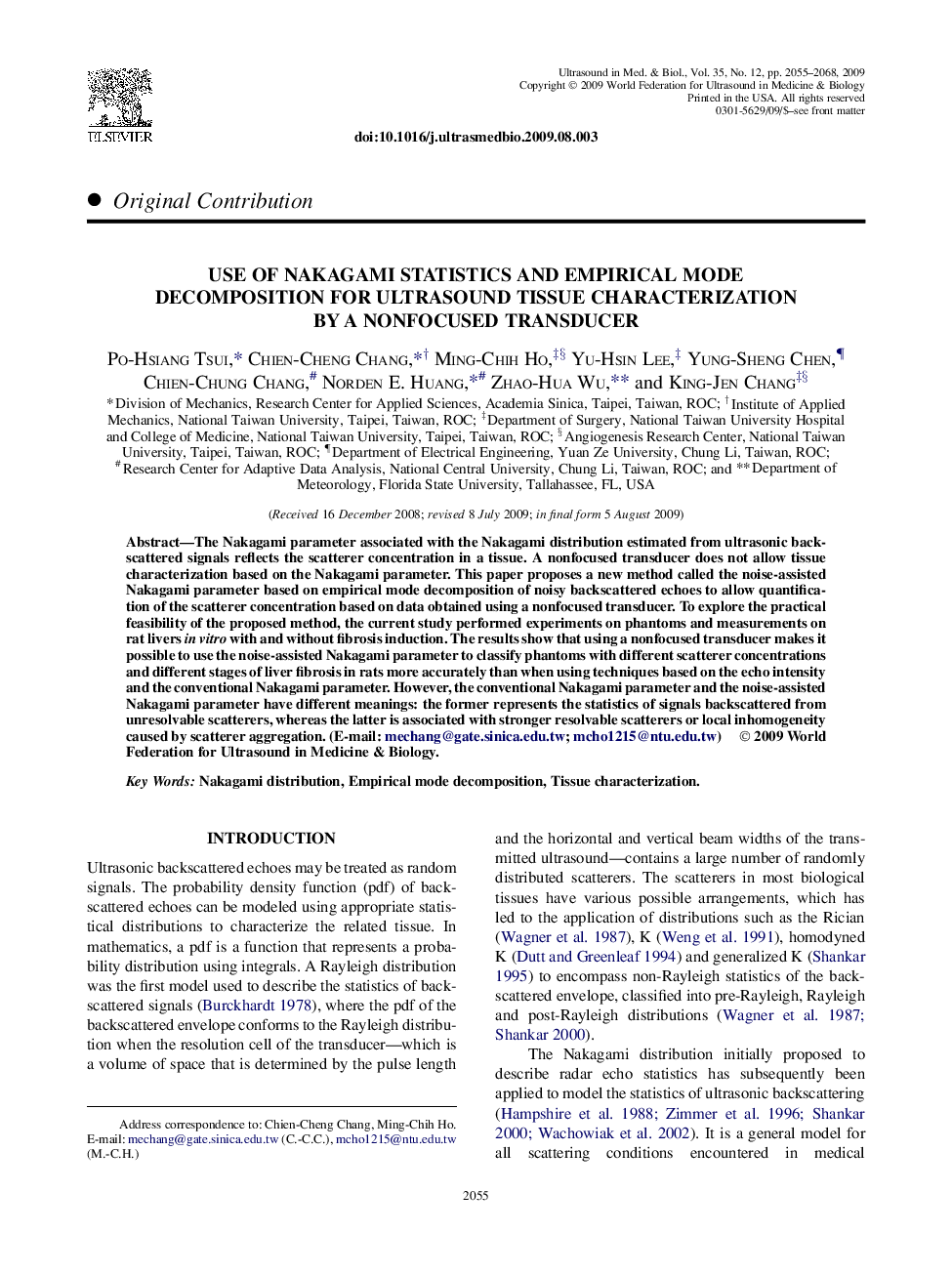| Article ID | Journal | Published Year | Pages | File Type |
|---|---|---|---|---|
| 1762249 | Ultrasound in Medicine & Biology | 2009 | 14 Pages |
Abstract
The Nakagami parameter associated with the Nakagami distribution estimated from ultrasonic backscattered signals reflects the scatterer concentration in a tissue. A nonfocused transducer does not allow tissue characterization based on the Nakagami parameter. This paper proposes a new method called the noise-assisted Nakagami parameter based on empirical mode decomposition of noisy backscattered echoes to allow quantification of the scatterer concentration based on data obtained using a nonfocused transducer. To explore the practical feasibility of the proposed method, the current study performed experiments on phantoms and measurements on rat livers in vitro with and without fibrosis induction. The results show that using a nonfocused transducer makes it possible to use the noise-assisted Nakagami parameter to classify phantoms with different scatterer concentrations and different stages of liver fibrosis in rats more accurately than when using techniques based on the echo intensity and the conventional Nakagami parameter. However, the conventional Nakagami parameter and the noise-assisted Nakagami parameter have different meanings: the former represents the statistics of signals backscattered from unresolvable scatterers, whereas the latter is associated with stronger resolvable scatterers or local inhomogeneity caused by scatterer aggregation. (E-mail: mechang@gate.sinica.edu.tw; mcho1215@ntu.edu.tw)
Related Topics
Physical Sciences and Engineering
Physics and Astronomy
Acoustics and Ultrasonics
Authors
Po-Hsiang Tsui, Chien-Cheng Chang, Ming-Chih Ho, Yu-Hsin Lee, Yung-Sheng Chen, Chien-Chung Chang, Norden E. Huang, Zhao-Hua Wu, King-Jen Chang,
